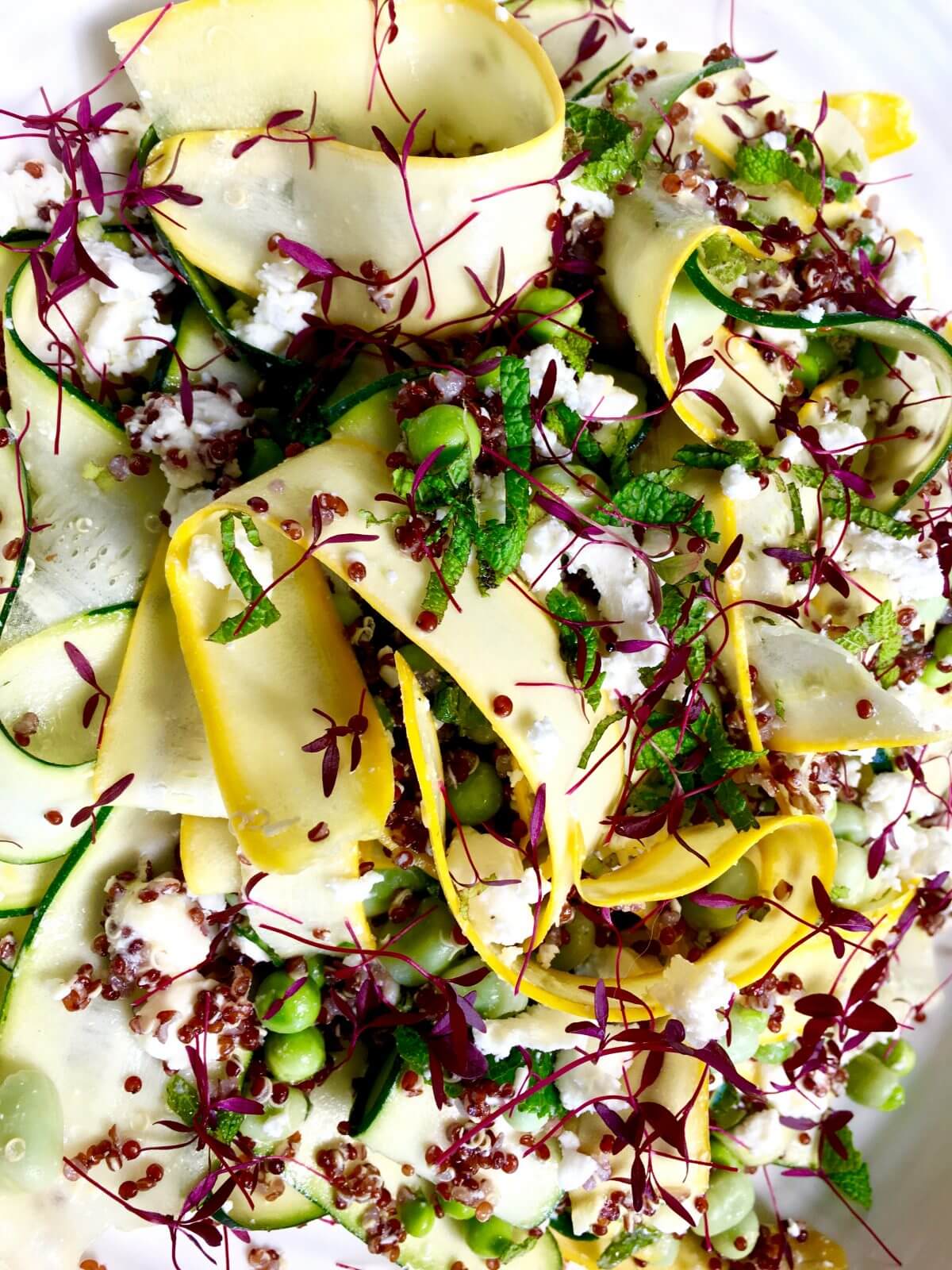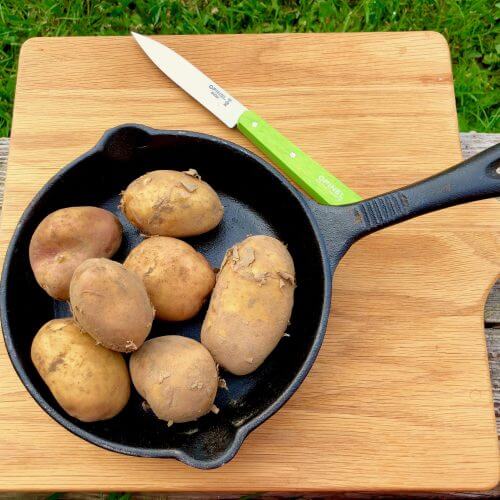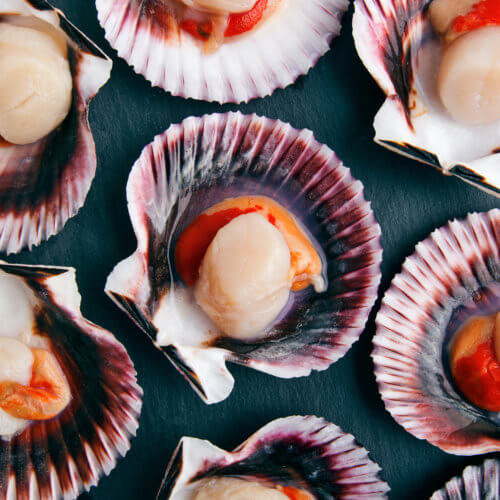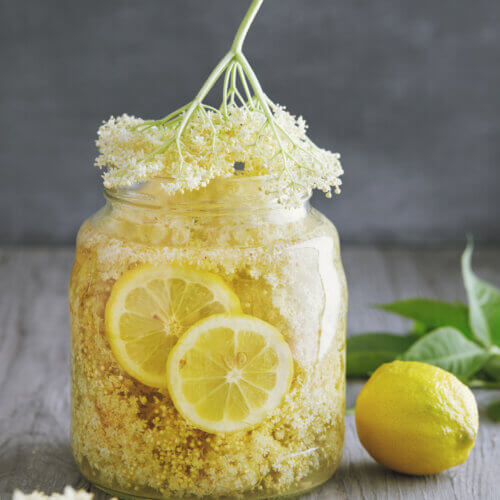Here is our pick of a few seasonal ingredients to try this month.
Mint
This is a fabulous herb – expressive, yet versatile, cooling and also easy to cultivate (never plant in the ground though, otherwise it will take over your garden – always plant in a pot). To cool down in the summer, mint tea is actually surprisingly effective (or simply pop a few sprigs in a jug of water and keep in the fridge). Mint is still often seen adorning desserts – regardless of what the dessert actually is and whether the flavours complement each other! It does, however, work with many sweet dishes – mint and berries (try topping meringues with cream, strawberries and mint), mint and pineapple and, of course, mint and chocolate! Mint should not only be thought of as a dessert herb through. We are familiar with mint and lamb (roast lamb with mint sauce, lamb and mint kebabs, etc.), but there are many more options – add chopped mint to guacamole, serve with watermelon and feta in a refreshing salad, try making pea and mint fritters, pork and mint works well (especially in a cold leftover salad with barley or spelt), smokey grilled meats are crying out for a tangy mint dipping sauce and a pea and mint hummus is a great alternative to the plain version. Let’s not forget cocktails – mojito is a classic, mint julep another, but mint will work well in many sweet cocktails as it lightens them and brings a wonderfully refreshing note.
Try making our Vanilla meringue hoop, Pimms jelly and yoghurt, mint and lime sugar with berries dessert.
Broad beans
When we were in Abruzzo, Italy, broad beans were served raw, still in their pods just with pecorino cheese and some toasted bread. This was a wonderfully simple snack, but bursting with flavour. Make sure you get hold of really fresh beans, as they loose their flavour quickly after picking. Broad beans also pair well with peas, mint and feta in a salad or with pasta and a little olive or rapeseed oil. They do make a lovely side dish, just boiled in salted water and served with lots of butter or ghee. You can also add cooked bacon or pancetta for a meaty side. Actually, they are incredibly versatile and can be added to soups, stews, frittatas, quiches and salads,
As they deteriorate quickly, keep them in the fridge and consume soon after purchase.
Squid
Most fishermen will tell you that squid is perennial, but that yields are greatest in late springtime and early summer. This is definitely the time to buy; higher stocks mean less wildlife depletion and lower prices.
Like other cephalopods – squid are often overlooked because of their appearance. They have eight arms, arranged in pairs and two longer tentacles for catching prey, and they look quite strange when removed from the water. However, rejecting or selecting any animal as a food source based on it being too ugly or too cute doesn’t make a lot of sense. The problem is that it becomes rubbery when overcooked. The answer is to either fry on high heat, quickly or a long slow braise. It’s also pretty versatile – and works very well flash fried with minimal effort (just in a light batter or salt and pepper), or made into an elaborate dish, stuffed with herbs and chorizo, then gently braised in a tomato and pepper sauce. Nutritionally, squid is a good food source for zinc, manganese, copper, selenium, vitamin B12 and riboflavin.
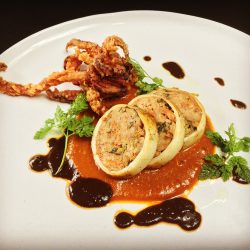
Courgette
Courgettes contain folate, potassium and vitamin A and are low in calories. They have a delicate flavour and so pair with an amazing range of ingredients – sweet and savoury. We have been busy developing recipes and here are a few we would like to share with you.
Frittata
For a large one:
Grate 3 courgettes into a bowl and throw a handful of fresh peas into the same bowl, season
Beat 6 eggs in another bowl
Heat a large glug of olive oil in a pan and throw the courgettes and peas in (you can use some dried spices, such as cumin, paprika, sesame seeds or garam masala
Fry for 5 minutes and then pour the courgette and oil mix into the bowl with the eggs, mix thoroughly and pour back into the hot pan
Cook on a medium heat until the bottom of the frittata is set
Pop into a hot oven (180C) for 15 minutes or until set
Scatter Feta cheese over the top and pop back into the oven until the feta has turned golden brown
Slide out of the pan and enjoy hot or cold
For individual ones:
Mix the eggs and fry the vegetables as above
Oil a large muffin tray and pour the eggs into the tray and top with the vegetables
Bake for 10 minutes and finish the frittatas as above
Did you know that you can also eat courgettes raw?
For the following recipe, you could either use a spiraliser, clever julienne peeler or simply your knife. Slice or spiralise your courgettes (one medium per person). Make a marinade by blending (or very finely chopping, grating or ideally zesting) 1 clove of garlic, zest and juice of 1/2 a lemon, 1/2 a chilli (or to taste) and a pinch of salt per person and combine with the courgettes for a simple salad. For a more complex twist, try adding other ingredients to the blender, such as fresh mint and mango, avocado, fresh oregano and tomatoes or basil, black olives and feta!
We have a lot more recipes here
